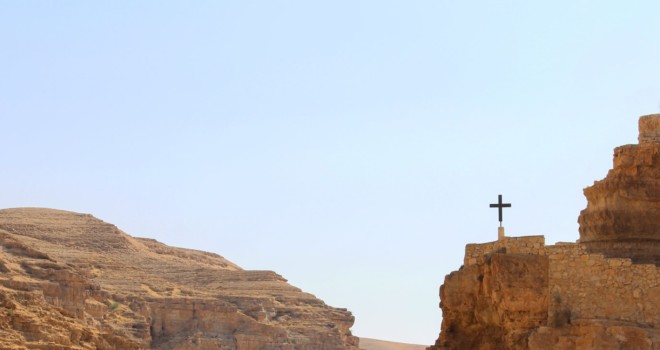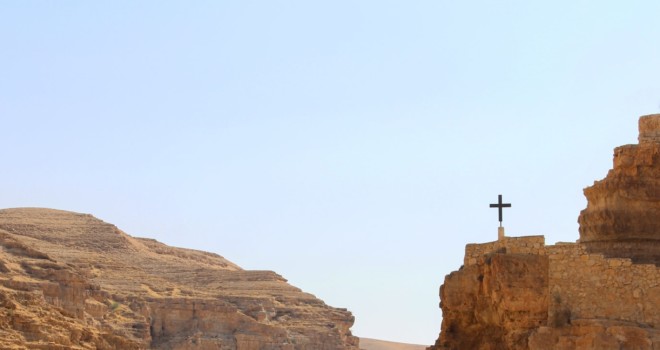Forty days—the duration of Lent—is one of the most symbolically significant periods of time in the Bible.
It’s not just the 40 days of temptation that Jesus faced in the desert. Or the years that the Israelites wandered in the desert and the days that the waters of the Genesis flood covered the earth. The Old Testament is punctuated with numerous other 40 days periods including:
- Moses was on the mountain with God for 40 days and nights
- the scouts explored the Promised Land for 40 days
- Goliath challenged the Israelites to a fight each day for 40 days
- the meal delivered by an angel sustain Elijah for 40 days in the desert
- Ezekiel bears the punishment of Israel for 40 days
- God postpones the destruction of Nineveh by 40 days giving the city time to repent
The number 40 itself also appears in years. It represents the periodic ‘rests’ granted to the land of Israel in the book of Judges. It is also the duration of the reigns of Saul and David and the number of years Israel was supposed to be in exile according to Ezekiel. Forty is also the number of lashes allowed in a punishment (Deuteronomy 25:3) and the length of the main hall of the first and second temples in the Old Testament. (See this site for a complete list.)
Forty is a number of punishment and repentance, testing and resting, and, above all else, absolute dependence on God. Whenever God wants to do something significant, He does it in 40 days (or years). As this Bible encyclopedia notes, “Forty is associated with almost each new development in the history of God’s mighty acts, especially of salvation.”
Each of the above certainly marks a new era in salvation history. The Genesis flood obviously marks the destruction of the known earth and a new beginning for mankind. The 40 days in the desert, on the mountain, and in the Promised Land, of course, are from the exodus account, the new beginning in the history of Israel. So also, the institution of a monarchy, with Saul and then David, also marks a new era for ancient Israel.
The biblical symbolism of 40 has an intriguing analogy in the natural world. Forty, it turns out, is the traditional number of weeks for a pregnancy.
Pregnancy is indeed an apt model for the biblical periods above. It begins with the intensity of the moment of conception, is followed by a time marked by both pain and joyful anticipation, and then, only after this period of postponement, is there the birth of someone new.
It is most fitting then that the new era of salvation for the whole began with a pregnancy: Mary’s.
Recall that the exodus account particularly parallels the highs and lows of pregnancy. It began with the extraordinary crossing of the Red Seat, was followed by the long sojourn in the desert, and concluded with the dramatic entrance into the Promised Land by another miraculous river cross, that of the Jordan.
The crossing of the Red Sea is a familiar symbol of baptism. But so is the crossing of the Jordan River (see for example, Origen.) And remember, it is through baptism that we are ‘born again.’ (In fact, one could perhaps see a continued analogy with childbirth, which begins with a woman having her ‘water break.’) Incidentally, the 40-day Genesis flood also prefigures baptism.
The connections among faithful endurance, spiritual renewal, and baptism in particular are driven home for us each Lent, at the end of which we are called to renew our baptismal vows.
In this way, we participate in Christ’s own desert experience, which began with his own baptism (in the Jordan River of all places).
In the Old Testament account, the 40 days of wandering anticipated their future dwelling in the Promised Land. The relationship between the two was reinforced by the fact that the scouts’ advance mission in the Promised Land lasted for 40 days.
So also in the New Testament, the disciples are granted a 40-day taste of their future life of glory: 40 days happens to be the amount of time Jesus remained on earth after His resurrection.
Scripture beckons us to embark on our own 40 day exodus. And it equips us with many models for these spiritual sojourns. Whether it’s to weather our own floods, survive the desert, or slay our own Goliaths, Lent is the time for spiritual action and passion—knowing ultimately that it is Jesus who journeys with us, who acts within us, and suffers for us and with us.
✠
Photo by Iva Rajović on Unsplash












